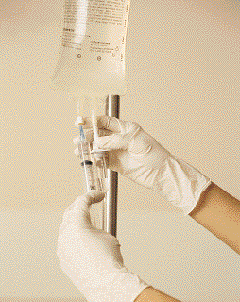Sepsis and Septic Shock Guidelines
/One of the main guidelines in sepsis is the Surviving Sepsis Campaign: International Guidelines for Management of Severe Sepsis and Septic Shock from 2012 (updating the 2008 guidelines).
Key recommendations and suggestions:
- Early quantitative resuscitation of the septic patient during the first 6 hrs after recognition (1C)
- Blood cultures before antibiotic therapy (1C)
- Imaging studies performed to confirm a potential source of infection (UG)
- Administration of broad-spectrum antimicrobials therapy within 1 hr of recognition of septic shock (1B) and severe sepsis without septic shock (1C) as the goal of therapy; reassessment of antimicrobial therapy daily for de-escalation, when appropriate (1B)
- Infection source control with attention to the balance of risks and benefits of the chosen method within 12 hrs of diagnosis (1C)
- Initial fluid resuscitation with crystalloid (1B) and consideration of the addition of albumin in patients who continue to require substantial amounts of crystalloid to maintain adequate mean arterial pressure (2C) and the avoidance of hetastarch formulations (1C)
- Initial fluid challenge in patients with sepsis-induced tissue hypoperfusion and suspicion of hypovolemia to acheive a minimum of 30 mL/kg of crystalloids (more rapid administration and greater amounts of fluid may be needed in some patients) (1C)
- Fluid challenge technique continued as long as hemodynamic improvement, as based on either dynamic or static variables (UG)
- Norepinephrine as the first-choice vasporessor to maintain mean arterial pressure >/= 65 mm Hg (1B)
- Epinephrine when an additional agent is needed to maintain adequate blood pressure (2B)
- Vasopression (0.03 U/min) can be added to NE to either raise MAP to target or to decrease NE dose but should not be used as the initial vasopressor (UG)
- Dopamine is not recommended except in highly selected circumstances (2C)
- Dobutamine infusion administered or added to vasopressor in the presence of a) myocardial dysfunction as suggested by elevated cardiac filling pressures and low cardiac output, or b) ongoing signs of hypoperfusion despite acheiving adequate intravascular volume and adequate MAP (1C)
- Avoiding use of IV hydrocortisone in adult septic shock patients if adequate fluid resuscitation and vasopressor therapy are able to restore hemodynamic stability (2C)
- Hemoglobin target of 7-9 g/dL in the absence of tissue hypoperfusion, ischemic coronary artery disease, or acute hemorrhage (1B)
- Low tidal volume (1A) and limiation of inspiratory plateau pressure (1B) for acute respiratory distress syndrome (ARDS)
- Application of at least a minimal amount of positive end-expiratory pressure (PEEP) in ARDS (1B)
- Higher rather than lower level of PEEP for patients with sepsis-induced moderate or severe ARDS (2C)
- Recruitment maneuvers in sepsis patients with severe refractory hypoxemia due to ARDS (2C)
- Prone positioning in sepsis-induced ARDS patients with a PaO2/FIO2 ratio of </= 100 mm Hg in facilities that have experience with such practicees (2C)
- Head-of-bed elevation in mechanically ventilated patients unless contraindicated (1B)
- A conservative fluid strategy for patients with established ARDS who do not have evidence of tissue hypoperfusion (1C)
- Protocols for weaning and sedation (1A)
- Minimizing use of either intermittent bolus sedation or continuous infusion sedation targeting specific titration endpoints (1B)
- Avoidance of neuromuscular blockers if possible in the septic patient without ARDS (1C)
- A short course of neuromuscular blocker (no longer than 48 hours) for patients with early ARDS and a PaO2/FIO2 < 150 mm Hg (2C)
- A protocolized approach to blood glucose management commencing insulin dosing when two consecutive blood glucose levels are > 180 mg/dL, targeting an upper blood glucose </= 180 mg/dL (1A)
- Equivalency of continuous veno-venous hemofiltration or intermittent hemodialysis (2B)
- Prophylaxis for deep vein thrombosis (1B)
- Use of stress ulcer prophylaxis to prevent upper gastrointestinal bleeding in patients with bleeding risk factors (1B)
- Oral or enteral (if necessary) feedings, as tolerated, rathern than either complete fasting or provision of only IV glucose with the first 48 hrs after a diagnosis of severe sepsis/septic shock (2C)
- Addressing goals of care, including treatment plans and end-of-life planning (as appropriate) (1B), as early as feasible, but within 72 hours of intesive care unit admission (2C).






 If you happen to run short of the lorazepam 2 mg/mL vials to compound your ativan drips, be mindful of the possibility of precipitation when using the lorazepam 4 mg/mL vials. AHFS Drug Info states:
If you happen to run short of the lorazepam 2 mg/mL vials to compound your ativan drips, be mindful of the possibility of precipitation when using the lorazepam 4 mg/mL vials. AHFS Drug Info states:

